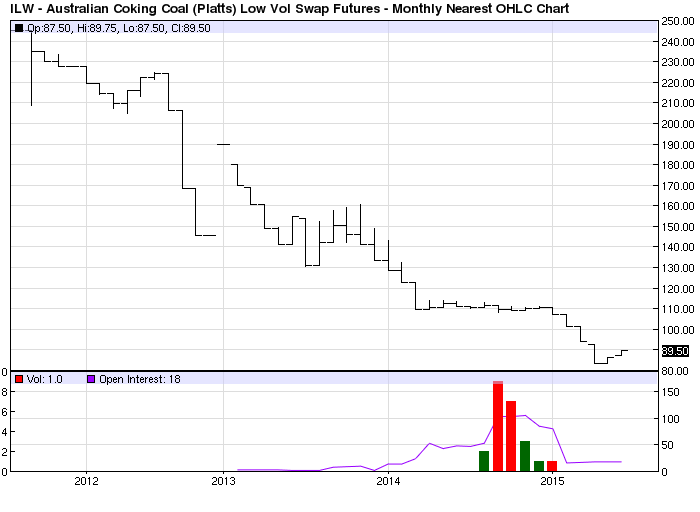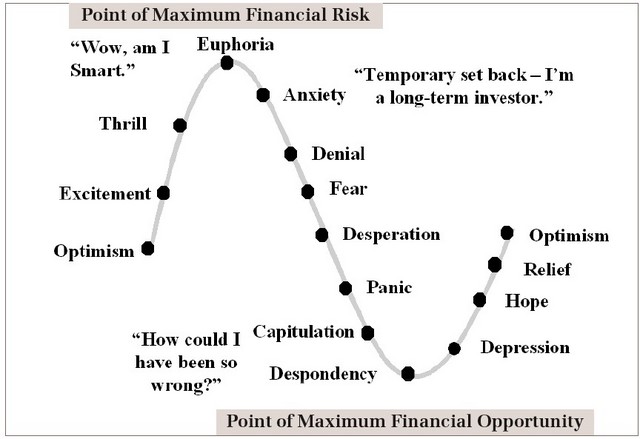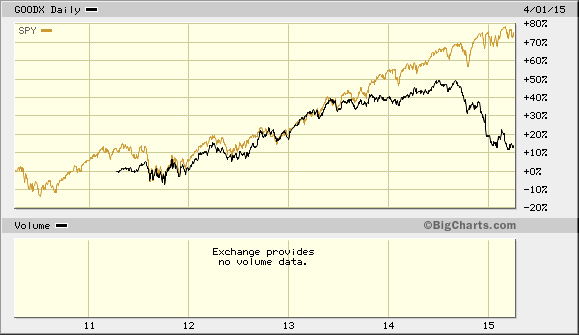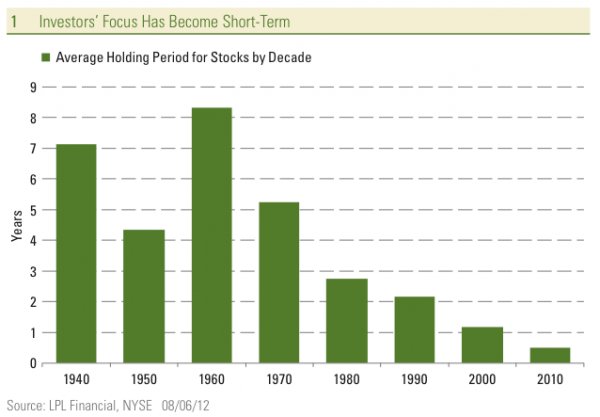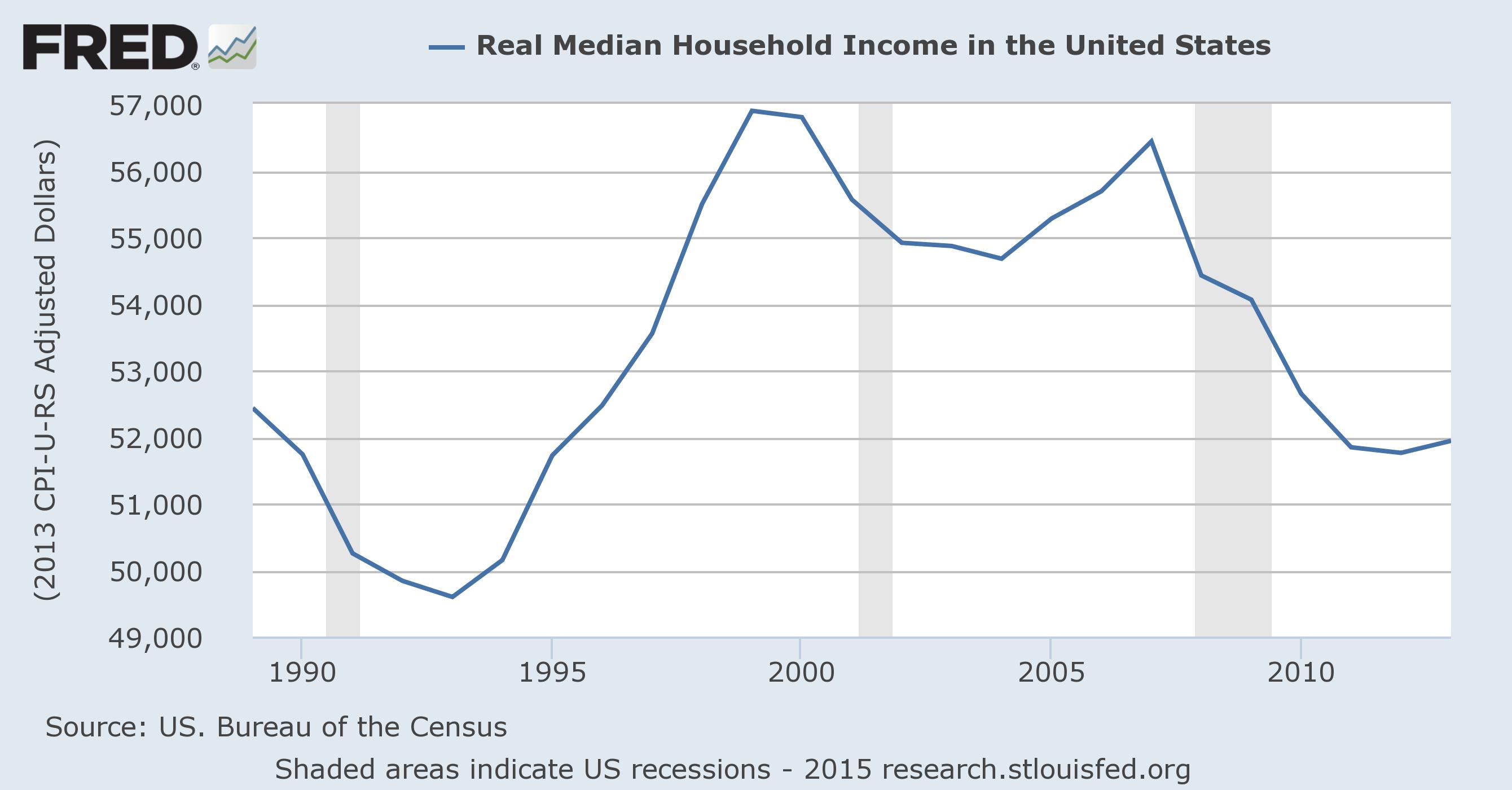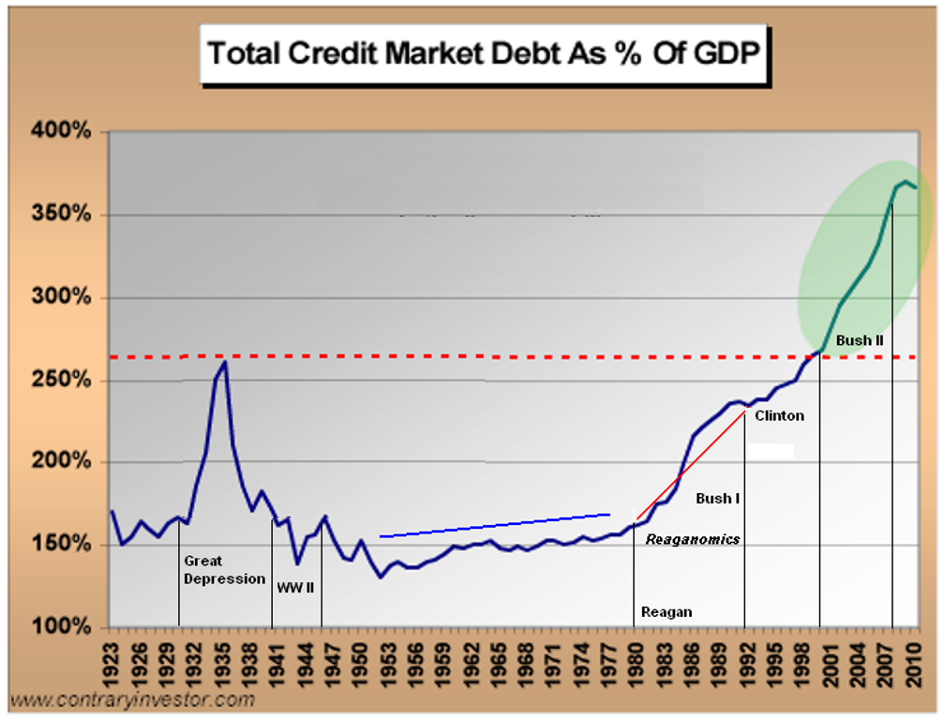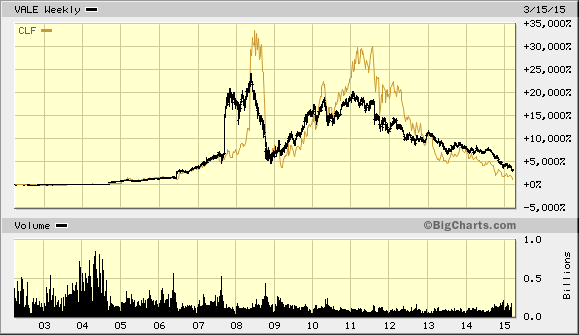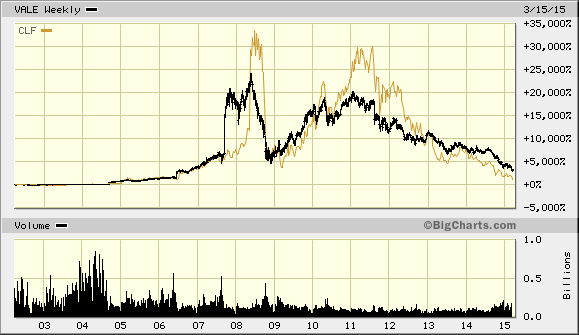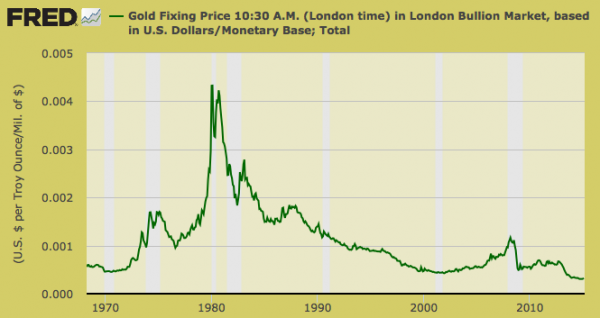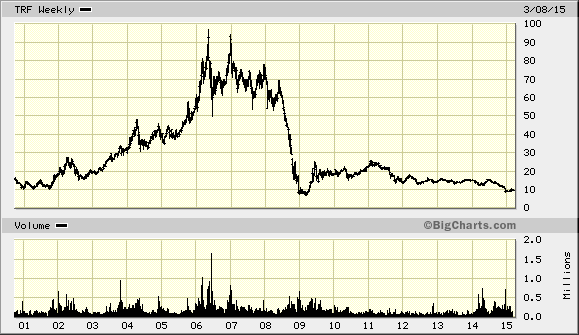Premium GTU to PSLV (Sprott)
Discount GTU to PSLV
Closed End Fund Arbitrage and Hostile Takeovers
- Posted by kid dynamite
- on April 23rd, 2015
When you account for the fact that GTU’s sector – precious metals ETFs/trusts/closed end funds – has been flooded with a variety of competing instruments which have superior redemption features, and that metals sentiment has been waning for a solid 2 years now, it’s not surprising that GTU had recently been trading at apersistent discount to NAV.
Enter: Polar Securities, who purchased a stake in both GTU and SBT.TO, and then made an effort to get the Trusts to change their bylaws in such a way that would likely narrow the discounts to NAV that both trusts were suffering from. Polar wrote a letter to unit-holders, and forced each board of directors to call a special meeting to vote on amending the bylaws.
None of this struck me as odd: this is something funds do all the time: buy cheap assets and try to unlock the value discounts that are present. Amazingly, however, in goldbug-land, Polar Capital taking steps to try to close the massive discount to NAV that these two precious metals trusts were facing turned into cries of Polar attempting to “raid” the metal from the trusts. While one might expect shareholders to be excited about the prospect of a narrowing of the massive NAV gap they’ve been languishing under, many instead rallied the wagons to fight this proposal!
GTU itself fought back, attacking the points of Polar’s proposal. The GTU board of trustees noted that
1) Polar’s proposed redemption feature would be available to only a small number of holders, due to minimum size in the redemption requirement. This is true, but largely irrelevant: all investors would benefit from a narrowing of the NAV discount if arbitrageurs came in to buy cheap GTU shares and redeem them to close the discount. Although:
2) The board also noted the tax effects of redemptions, where the gains on sale of bullion would be taxable, and be borne by remaining shareholders. This is true, but the effect would be miniscule compared to the massive discount to NAV that could be closed.
3) U.S. Mutual Funds may sell GTU to avoid these adverse tax consequences. Reality suggests that GTU’s largest unit-holder, a U.S. based mutual fund, is eager to see the discount narrowed – but more on that later.
4) Polar’s proposal would increase GTU’s operating expenses. Again, this is true, but we’re talking about matters of basis points – not percentage points that could be gained by the adoption of the proposal and closing of the massive NAV discounts.
So Polar replied with a PR of their own, repeating that the Trustees had no means of closing the discount and no plan to do so. A common refrain you’ll hear from holders of GTU is something like: “when the price of gold is going down, GTU trades at a discount to NAV. When the price of gold goes back up, the discount will narrow.”
Well: *maybe* it will narrow – or maybe the market has been saturated with superior competing products that have equal “safety” and pareto-superior redemption features that can actually insure that discounts to NAV will be closed. GTU lacks these features, and thus there is no reason why the discount must close if/when the price of gold rallies. As I noted in a past post, just because a closed end fund traded at a premium in the past doesn’t mean it will/should trade at one again in the future, *especially* when there are a plethora of other ways to get the same exposure with other products.
Anyway, GTU responded to Polar’s latest PR quickly, noting:
1) Polar is not aligned with long term holders of GTU – I don’t know what this means: Polar wants the discount to NAV closed, which is exactly what the other holders should want.
2) Polar’s proposal is not “the answer” and the consequences of their proposal are real, explaining:
“In fact, Polar’s proposal can only be proven to eliminate the discount for the less than 1% of Unit-holders (including Polar) that could utilize Polar’s proposed physical redemption feature. The remaining 99% of Unit-holders are being asked to trust Polar’s opinion while Polar exits its position.”
That, of course, is nonsense. Again: if I’m a GTU holder, I don’t care that I can’t buy and redeem enough units to get a gold bar: the act of others doing it will drive the price up and close the discount! Yes, again we have that tax issue addressed above, if the redemptions actually happen – but more on that later….
3) etc etc etc
Amazingly, next, Institutional Shareholder Services, a proxy advisory firm, came out on the side of the Trust, and recommended that unit holders vote against Polar’s proposal! ISS wrote:
“Overall, the short-term and opportunistic nature of the dissident proposal constitutes a cause of concern for long-term unit-holders. In addition, by just amending the trust’s Declaration of Trust and not providing a detailed business plan with new strategic initiatives on how to better manage the trust, the dissident’s request to replace the majority of the board appears overly demanding”
I was surprised by this, as there’s nothing “short-term” about a redemption feature that would protect all shareholders from future NAV dislocations.
Polar, of course, “disagreed” with the ISS recommendation, noting, among other things:
“ISS displays lack of capital markets understanding” – which I completely agree with.
Polar added a few more bullet points, which I agree with:
- ISS ignores peer comparisons, governance failures and needless value destruction
- CGT discount to NAV could widen further without effective redemption feature
- Polar has proposed the ONLY solution to eliminate the significant trading discount to NAV
This week, Polar figured they’d try to counter some of the GTU Board of Trustees responses that were off base, so they committed to not redeeming any GTU shares for the remainder of 2015. Why did they do this? Because again: they’re not interested in “raiding” GTU’s gold: they’re interested in capturing the NAV discount that should be remedied. Polar knows that even if they don’t redeem, the discount is highly likely to close if a redemption feature is added. Either the market will correctly price the units to reflect their NAV, or other arbitrageurs will come in an ensure that the price reflects the proper value – redeeming if necessary.
I’ll give you one guess what happened next: GTU’s board responded again, in a PR titled “Polar’s Empty Promise To Delay Their Redemption Does Nothing to Correct the Fundamental Flaws in Their Proposal.” Shockingly, GTU basically seems to be accusing Polar of lying about not redeeming, because GTU, like the ISS, seems to lack an understanding of how capital markets work. GTU’s Special Committee Chairman added:
“…Such a delay does not level the playing field for the over 99% of Unit-holders who could not utilize their proposed physical redemption option, and who would be inheriting the increased cost and potential tax liability that come with it”
Again, this is ludicrous: GTU holders do not have the ability to redeem their shares at NAV. Under Polar’s proposal, small shareholders would *still* not have this ability, but they’d be massive beneficiaries of the fact that others do have this ability. Yes, again we have that tax issue, which is like complaining about pennies when someone is offering you dollars.
I already loved this story, as it was a back and forth between some guys who just wanted to help shareholders (and themselves, of course) realize the underlying value of their investment, but were being fought on all fronts by some shareholders and by the Trust itself. But wait – today the drama kicked up a notch when none other than Sprott Asset Management jumped into the fray, making an unsolicited offer to exchange shares in GTU and SBT.TO for newly issued shares of its own physical bullion trusts: PHYS and PSLV. Sprott (I’m using “Sprott” for “Sprott Asset Management” here, not to indicate “Eric Sprott”) is basically proposing a takeover of the Central Trusts, where shareholders would receive shares of Sprott’s trusts instead, and Sprott would merge the underlying metal into their own trusts.
Brilliant! I would expect that not a single goldbug site will write about Sprott trying to “raid” the Central Trusts, although that’s exactly what they’d be doing: piling the bullion under the Sprott umbrella so that Sprott Asset Management can get the management fees that Central Trust has been getting. Never mind the fact that Sprott’s total fees are roughly 20 bps higher than Central Trust’s, or that when units are redeemed from Sprott’s trusts there are tax consequences like the ones Central Trust has been complaining about – if I were a GTU shareholder I’d be psyched for this offer! Well, we don’t know the exact terms of the offer yet – Sprott filed an SEC doc with some details, including that the exchange would be on a “NAV for NAV” basis, but I’d like to see the final details before blessing it.
Basically, though, I very much agree with Sprott’s CEO, John Wilson, who noted:
“It’s really just a very simple solution,” he said in an interview. “Why would you own that unit when you have opportunity to own a more liquid unit that does all the things you want and trades at its intrinsic value?”
Indeed! I have been critical of Sprott on these blog pages in the past, but this one is a no-brainer for Sprott Asset Management, and probably for Central Trust unit-holders as well (side notable: Eric Sprott is no longer the man in charge – at least not officially – at Sprott Asset Management). Sprott Asset Management knows – or perhaps GTU’s largest unit-holder, Pekin Singer Strauss, told them – that while Canadian retail precious metals investors might be distrustful of some evil arbitrage fund trying to raid the metal from their trust, Canadian retail precious metals investors love and *trust* Sprott! Hence, the beauty of this exchange offer, which, if successful, would result in PHYS increasing its assets by roughly 50%! You can do the math yourself, but Sprott Asset Management is looking at more than $ 3MM in additional annual management fees alone. Synergies!
Of course, Polar already put their 2 cents in, issuing a PR that said that they welcomed the Sprott Exchange Offer– which, well, of course they do! The Sprott exchange offer, if it’s truly on a 100% NAV to NAV basis, will narrow the NAV discount that the Central Trusts are facing.
Nothing on this page should be construed as investment advice, which I couldn’t possibly give since we don’t know the details of the exchange offer anyway, but if I were a GTU shareholder, I’d be ecstatic about the Sprott Exchange offer’s preliminary details. I can’t wait to see how the GTU board of Trustees reacts to this approach, especially since they’ve already pounded the table on the tax issue, while Sprott’s trusts face similar tax issues. GTU’s board has also brought up management fees, but Sprott’s funds have significantly higher fees. In other words, I think that it will be very hard for GTU’s board to deny the significant accretion that their unit-holders are likely to see under the Sprott exchange, but it’s also going to be odd to see them ignore the complaints they brought up multiple times in the back and forth with Polar.
Sprott’s CEO insinuated in a Bloomberg interview that it was GTU’s largest shareholder, Pekin Singer Strauss (probably nervous that Polar’s proposal was meeting resistance from GTU’s exceedingly naive shareholder base) who approached Sprott with this master win-win plan: “through that process some of those unit-holders reached out to us and thought we might offer a better solution” – I can’t wait to see how GTU’s Board reacts to this whole thing…
Stay tuned – this is pure gold for closed end fund geek drama…
-KD
I have no positions in GTU, SBT.TO, PHYS or PSLV




